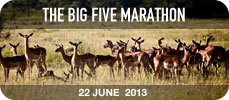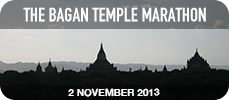Great Barrier Reef


A natural wonder
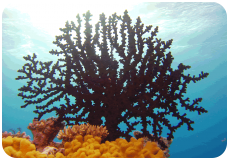 The Great Barrier Reef is one of the world's great natural wonders. It is the largest reef in the world and consists of nearly 3,000 individual reefs, 880 islands and thousands of different types of plant, bird and marine life. It is a breeding area for humpback whales, migrating from the Antarctic and is also the habitat of a few endangered species including the dugong (sea cow) and large green sea turtle. UNESCO listed the Great Barrier Reef as a World Heritage site in 1981.
The Great Barrier Reef is one of the world's great natural wonders. It is the largest reef in the world and consists of nearly 3,000 individual reefs, 880 islands and thousands of different types of plant, bird and marine life. It is a breeding area for humpback whales, migrating from the Antarctic and is also the habitat of a few endangered species including the dugong (sea cow) and large green sea turtle. UNESCO listed the Great Barrier Reef as a World Heritage site in 1981.
It is larger than the Great Wall of China and the only living thing on earth visible from space. The marine park stretches over 3,000km, almost parallel to the Queensland coast, from near the coastal town of Bundaberg, up past the tip of Cape York Peninsula, and occupies an area of more than 344,000 sq km. Its width ranges between 60 and 250km.
Ablaze with iridescent hues
The Great Barrier Reef is the habitat of one third of the world’s corals. Roughly 400 coral species live in the region making them a crucial part of the reef’s ecosystem. The solid structure of the reef is formed by hard corals which are formed from a limestone-encased polyp organism which splits into two, shedding its hard outer layer when a new skeleton is formed. The various coral structures provide the habitat for numerous fish, plankton, algae and other micro-organisms of the sea. Over a thousand species of fish live in the waters of the reef. Tusk fish, wrasses and damselfish are among the most common species and more than five thousand species of molluscs such as giant clam, cone shells and squid are found in these waters. Snorkelling among the wondrous symphony of colours and marine life is an aquatic adventure parallel to none.
Dive with the whales
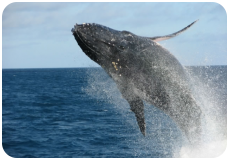 Numerous species of whales, porpoises and dolphins live in the Great Barrier Reef waters. Dwarf minke whales are regular visitors of the reef during June and July. Their consistent migration pattern means that it is common to encounter them during diving expeditions, offering a truly unique up-close encounter with these fascinating mammals. The much larger Humpback whales also pass through every year between May and September. They stay in the region to calve and regain energy before returning to the Antarctic. Bottlenose dolphins are also regulars in the reef and are among the most commonly sighted species of dolphins.
Numerous species of whales, porpoises and dolphins live in the Great Barrier Reef waters. Dwarf minke whales are regular visitors of the reef during June and July. Their consistent migration pattern means that it is common to encounter them during diving expeditions, offering a truly unique up-close encounter with these fascinating mammals. The much larger Humpback whales also pass through every year between May and September. They stay in the region to calve and regain energy before returning to the Antarctic. Bottlenose dolphins are also regulars in the reef and are among the most commonly sighted species of dolphins.
Ancients of the sea
Marine turtles have been swimming in the world’s seas for over 150 million years, making them some of the oldest inhabitants of the sea, first appearing during the dinosaur age. Six of the world’s seven species of turtles are found in Australia. All of them live within the Great Barrier Reef World Heritage area and the loggerhead turtle and green sea turtle are commonly sighted whereas species such as the Olive Ridley and leatherback are rarer.
Reef meets Rainforest
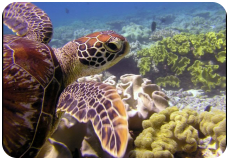 Cape Tribulation is one of the points where the Reef meets the Daintree Rainforest and is also the starting point for excursions to the Cape York peninsula. The historic Cooktown, located at the mouth of the Endeavour River on Cape York, is the site of the famous shipwreck of the Endeavour, a British ship carrying Lieutenant James Cook and his crew. They stayed in the area for a few weeks while repairing their ship and many of the surrounding bays and rivers are named by Cook, such as the Endeavour River, Weary Bay, Mount Sorrow and Cape Tribulation.
Cape Tribulation is one of the points where the Reef meets the Daintree Rainforest and is also the starting point for excursions to the Cape York peninsula. The historic Cooktown, located at the mouth of the Endeavour River on Cape York, is the site of the famous shipwreck of the Endeavour, a British ship carrying Lieutenant James Cook and his crew. They stayed in the area for a few weeks while repairing their ship and many of the surrounding bays and rivers are named by Cook, such as the Endeavour River, Weary Bay, Mount Sorrow and Cape Tribulation.
Find out more about the Great Barrier Reef tour and watch the Great Barrier Reef film.
Video
Newsletter
Don't miss out! Get the latest updates on this experience of a lifetime.







